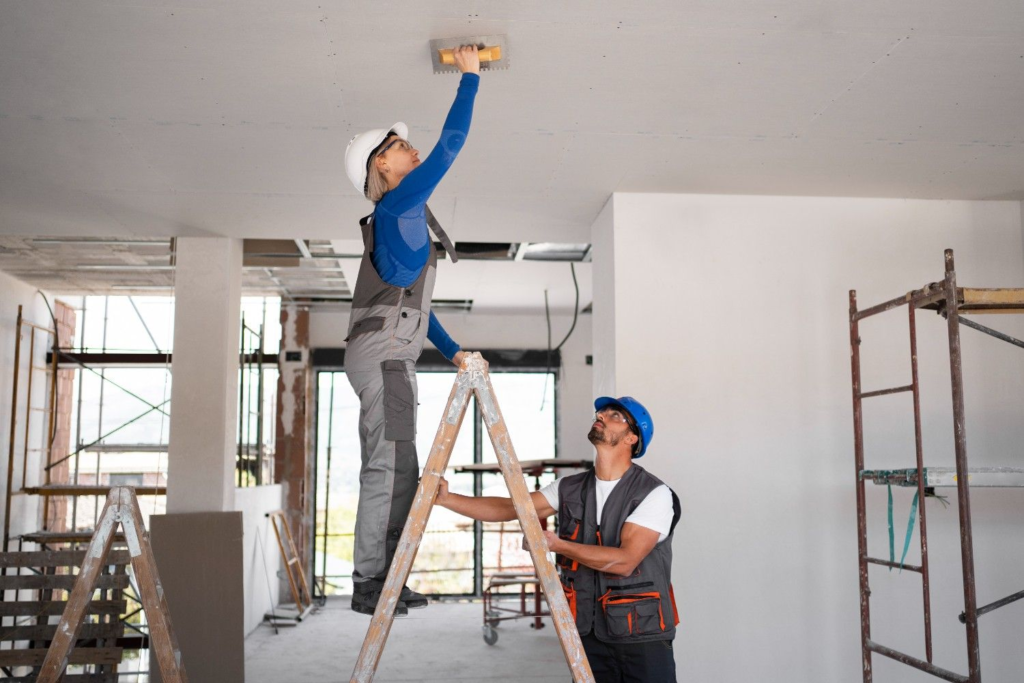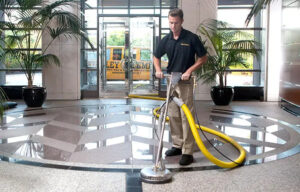Healthy Home Plastering| Mould-Resistant Plasters in the UK
In many UK homes, especially older or poorly ventilated ones, damp and mould can become ongoing problems. These issues not only damage the structure of a property but also create serious health risks for those living in it. While various solutions are available, one practical and lasting approach is the use of mould-resistant plaster.
This blog explores the benefits of mould-resistant plasters and how professional help from reliable construction companies and experienced plasterers can make a significant difference in creating healthy, long-lasting interiors.
The Problem with Damp & Mould in UK Homes
The UK’s damp and chilly climate creates ideal conditions for mould to thrive, particularly in spaces with poor air circulation or excess condensation. According to NHS England and various housing studies, mould is a common cause of respiratory issues like asthma, wheezing, and chronic sinus problems. Children, the elderly, and those with existing respiratory conditions are especially vulnerable.
Aside from health, mould and damp can weaken paint finishes, damage plasterboard, and eventually harm the overall structure of the walls. Once mould sets in, it becomes difficult to remove without addressing the root cause—excess moisture. That’s why many construction companies Cardiff now recommend specialist plastering solutions to protect walls and improve internal air quality.

What is Mould-Resistant Plaster?
Mould-resistant plaster is a specially formulated wall coating that actively reduces the chances of mould growth. Unlike traditional plaster, which can absorb moisture and become a breeding ground for spores, mould-resistant plasters are designed to resist water absorption and allow surfaces to “breathe.”
There are various types of mould-resistant plaster available in the UK:
- Lime-based plasters: Naturally breathable and alkaline, they are excellent at preventing mould growth.
- Gypsum plasters with anti-fungal additives: These provide a more conventional finish with added protection.
- Cement-based plasters: Often used in basement and utility areas where moisture levels are high.
These products are gaining popularity among homeowners, landlords, and renovators because they offer long-term benefits without drastically increasing the project budget. Leading plasterers are increasingly trained to apply these advanced materials with skill and precision.
Benefits of Using Mould-Resistant Plasters
Choosing mould-resistant plaster offers both health and financial benefits. Here are a few reasons why it’s a smart investment:
1. A Healthier Home Environment
By preventing the growth of mould and mildew, these plasters help maintain good indoor air quality, reducing the risk of respiratory infections and allergic reactions.
2. Long-Term Cost Savings
While the upfront cost may be slightly higher, the long-term savings are significant. Homeowners save on repeated re-plastering, cleaning, repainting, and mould treatments.
3. Added Durability
Mould-resistant plasters are more robust in high-humidity areas and tend to last longer without degrading or flaking, especially in areas like bathrooms, kitchens, or basements.
4. Peace of Mind for Landlords
For landlords and property managers, fewer tenant complaints about damp and fewer maintenance requests make this a worthwhile upgrade.
5. Energy Efficiency
Some breathable plasters contribute to better thermal regulation inside the home, potentially lowering heating bills.
When applied correctly by qualified plasterers, these plasters not only look good but also perform reliably under various conditions.
Where to Use Mould-Resistant Plaster in the Home
Knowing where to apply mould-resistant plaster can maximise its effectiveness. Here are the key areas of the home where it’s most beneficial:
- Bathrooms & Kitchens: These rooms produce the most steam and moisture. Mould-resistant plaster can prevent damp patches and peeling paint.
- Basements & Cellars: These spaces are typically cold and damp. Using the right plaster can significantly improve moisture control.
- Utility Rooms & Laundry Areas: With constant exposure to humidity, these areas need extra care.
- Behind Wardrobes & Furniture: Poor airflow in these areas often leads to unseen mould growth.
- External-Facing Walls: These walls are exposed to outdoor temperature fluctuations, leading to condensation if not properly treated.
A professional survey by reliable construction companies can help identify vulnerable areas and recommend the best course of action.
What to Expect from a Professional Application
DIY mould-resistant plastering may be tempting, but it rarely delivers the same results as a professional job. Hiring certified plasterers Cardiff ensures the surface is properly prepared and the plaster is applied with the right techniques.
Here’s what you can typically expect during a professional application:
- Assessment: The surface is checked for damp, structural issues, or existing mould. Any underlying causes are addressed before plastering.
- Preparation: The walls are cleaned, repaired, and primed. Sometimes, a damp-proof membrane or base layer is applied.
- Application: The mould-resistant plaster is applied in layers, ensuring breathability and durability.
- Finishing Touches: Once dried, the wall can be painted with mould-resistant paint for double protection.
- Aftercare Advice: You’ll get tips on ventilation and maintenance to avoid recurring issues.
Working with trusted construction companies ensures that the process is seamless, safe, and tailored to your home’s unique needs.
Costs, Longevity & Maintenance
Mould-resistant plaster may cost slightly more than standard plaster, typically around £10 to £15 more per square metre depending on the brand and application complexity. However, this upfront investment pays off over time.
Most mold-resistant plasters can last 10–15 years or longer with minimal maintenance. Keeping rooms well-ventilated, using extractor fans, and regularly checking for leaks are simple ways to maintain your walls.
If properly applied by skilled plasterers, maintenance is usually limited to occasional repainting or surface cleaning.

Supporting a Greener & Healthier Build
There is a growing trend in the UK construction industry toward healthier and more sustainable materials. Mould-resistant plasters fit this movement perfectly. They often contain natural ingredients like lime or clay and reduce the need for harsh chemical treatments down the line.
For homeowners looking to future-proof their properties or meet eco-building standards, these plasters are an excellent step forward. They also complement other energy-efficient home improvements like breathable insulation, draught-proofing, and low-VOC paints.
Leading construction companies are now including mould-resistant plastering as part of eco-home renovation packages, recognising its value not just for health, but also for environmental responsibility.
Conclusion
Mould-resistant plaster is more than just a building material—it’s a long-term investment in your health, home, and overall comfort. Whether you’re upgrading a single room or renovating an entire property, this specialist plaster helps reduce mould, improve air quality, and protect your walls.
Professional advice and application from reputable plasterers and construction companies can ensure the job is done to a high standard, making your living space safer and more durable.
For those looking to transform their homes with high-quality, health-focused materials, AO Builders Cardiff is here to help. We offer expert plastering services and renovation solutions that put your wellbeing and property value first.












